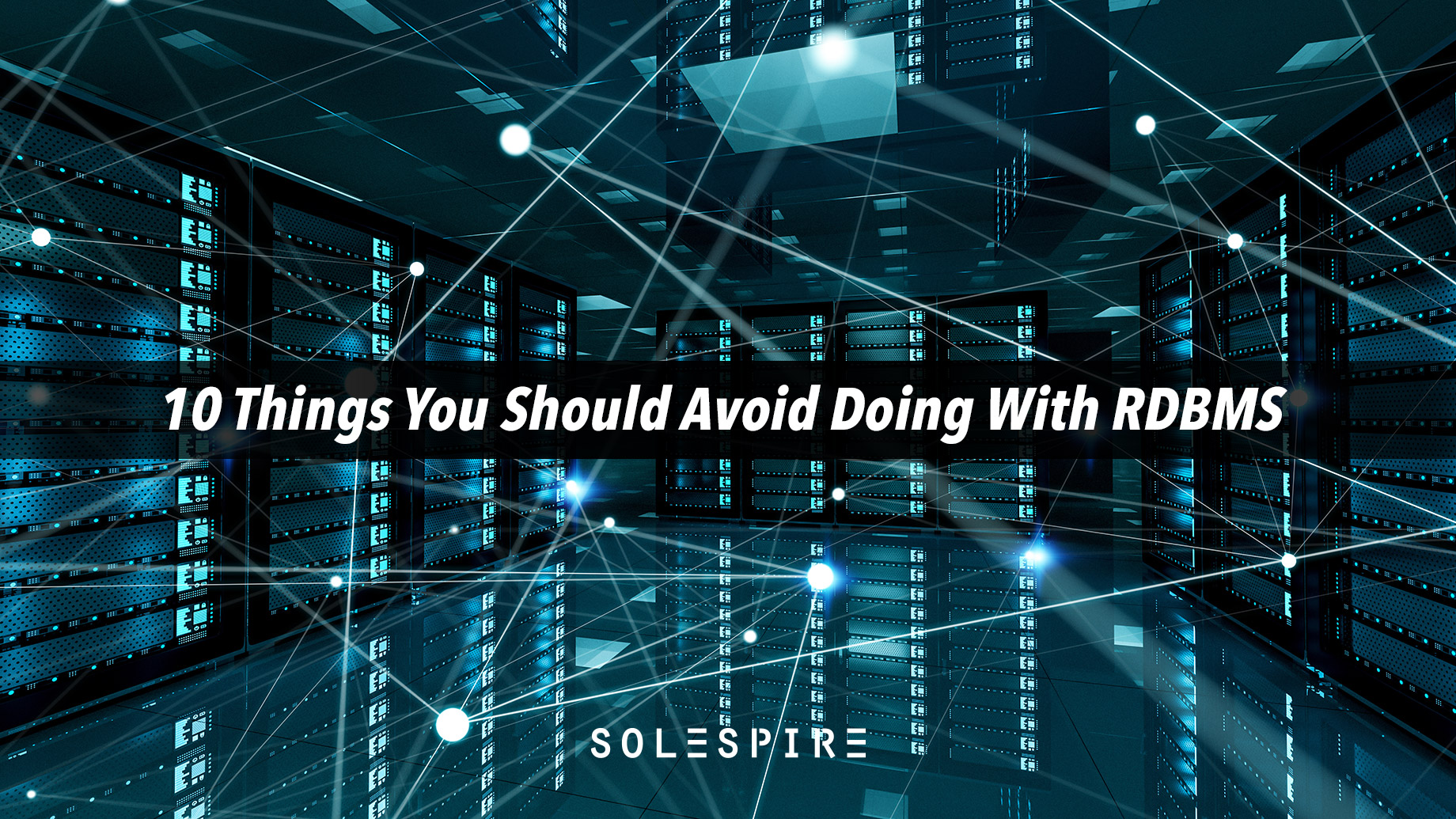
If you are going to use a relational database management system for your enterprise DBMS operations, then here are some things you need to consider in terms of choosing it or not to ensure the optimum performance of your database applications. Without much ado, let us get into the topic.
10 Things You Should Avoid Doing With RDBMS
1. Search
Even the most sophisticated Oracle database, you may not Oracle Text the extension. Oracle also does not seem to develop it reactively over time. Instead, we can see many people using some complicated queries that are heavy with ‘like’ operators. The result of this is very weak and complicated. The output of these applicators is also very ugly in terms of its capabilities, and the process for getting data, just the way Oracle does, is very tough. Outside of Oracle, many other databases do not have any such search extensions. You may use things like Hibernate search or even the better-fitting index performances.
2. Recommendations
This is another important part of the commercial products we tend to work with. Here, you may have to capture a lot of data about the users in order to make some recommendations for stock makeup. Just consider the social network as if you want to recommend something for the reason that their friend or friend’s friend may have bought it, which may look ugly in the case of an RDBMS. Here, we are taking some self-joining tables at different levels of querying. Graph databases like Neo4j may be ideal for these types of purposes.
3. High-frequency trading
You may think that your trading systems may work well on RDBMS because the data here is transactional. However, this is a wrong assumption to make. The high-frequency traders may be among those who create the NoSQL approaches better. Low latency is the key factor in the success of high-frequency trading. If you have gone through some serious hoops, you may find the low latency with relational database systems a curse. Oracle tried to answer it by attempting to combine an in-memory database with the relational database system, but it did not really work out. You cannot simply tie a goose to a truck and make an airplane, right? So instead of considering RDBMS, we may go for some key-value store databases for high-frequency trading purposes.
4. Product catalogue
It is not exciting stuff to talk about, but it remains a nightmare in terms of the SQL queries related to product data and formatting. While working with mobile databases, this may be something critical to consider. The same model itself may have different components, so managing all these classes cannot be handled well with RDBMS. You may also be facing the same problem while working with different types of industries and products on relational DBMS.
5. Users/groups
LDAP was designed primarily for the users and user groups. Unfortunately, many people still have LDAP hangovers when the technology was fresh, and the companies performed some monstrous things with it. Some of the enterprises also built a bureaucracy around LDAP, with which many developers left with no choice other than to adopt it. This actually defeated the purpose of a centralized user access control.
6. Log analysis
If you want to get a good understanding of this, you can just turn on the log analysis of Hadoop for a limited cluster of services. Just consider the log level and the log capture to entities other than an error. Then you try to do something complex, and you will slowly find it turning out to very bad. This kind of unstructured data analysis is exactly what MapReduce is for. Unfortunately, the major tools related to it are still RDBMS-oriented, which really do not need any transactions, and low latency is something that you may ultimately struggle with.
7. Media repository
Blocks in the RDBMS may still be a pain after all these developments. You will be better off using some kind of distributed storage system or a clustered file system for your binaries and images etc. Many content management system engines are still shoving off everything into RDBMS.
8. Email
Email is moderately unstructured data that cannot be best stored in RDBMS. Even when we optimize an RDBMS as much as possible for some crazy things like blogs etc., it is difficult to handle emails. When it is more about metadata content and search, none of these blends well themselves to the relational database algorithms.
9. Classified ads
With high-scale traffic and multiple users in and out, short and sweet content, these also do not work out well with RDBMS. You can just check out Craigslist, for example, which uses a document database like MongoDB. There is search, and there is metadata also, so the eventual consistency may be good enough with NoSQL. Non-relational databases are used for these kinds of document management purposes at best.
10. Forecasting
In terms of forecasting and time series, this is also another general thing out of RDBMS considerations. These data may take various forms, and the basic issue is around the time series of relational DB, which is legendary stuff. This had been addressed after years of hacking around it, but the requirements have again changed a lot over the last decade. This said, it is time-series or forecasting; MapReduce and Cassandra are better solutions than RDBMS.
Even though we have discussed some drawbacks of RDBMS here, there are many advantages to adopting the relational database model and structure query management. Relational DBMS has been available for many decades now and has undergone various technological tweaks and upgrades over time. Many of the shortfalls of the early generation RDBMS have now been sorted out, and in terms of flexibility and scalability also, RDBMS has grown a lot. However, while considering enterprise database management systems, you need to consider all your priority functions and then only decide whether to go ahead with the relational database management system or non-relational DBMS like NoSQL systems.
